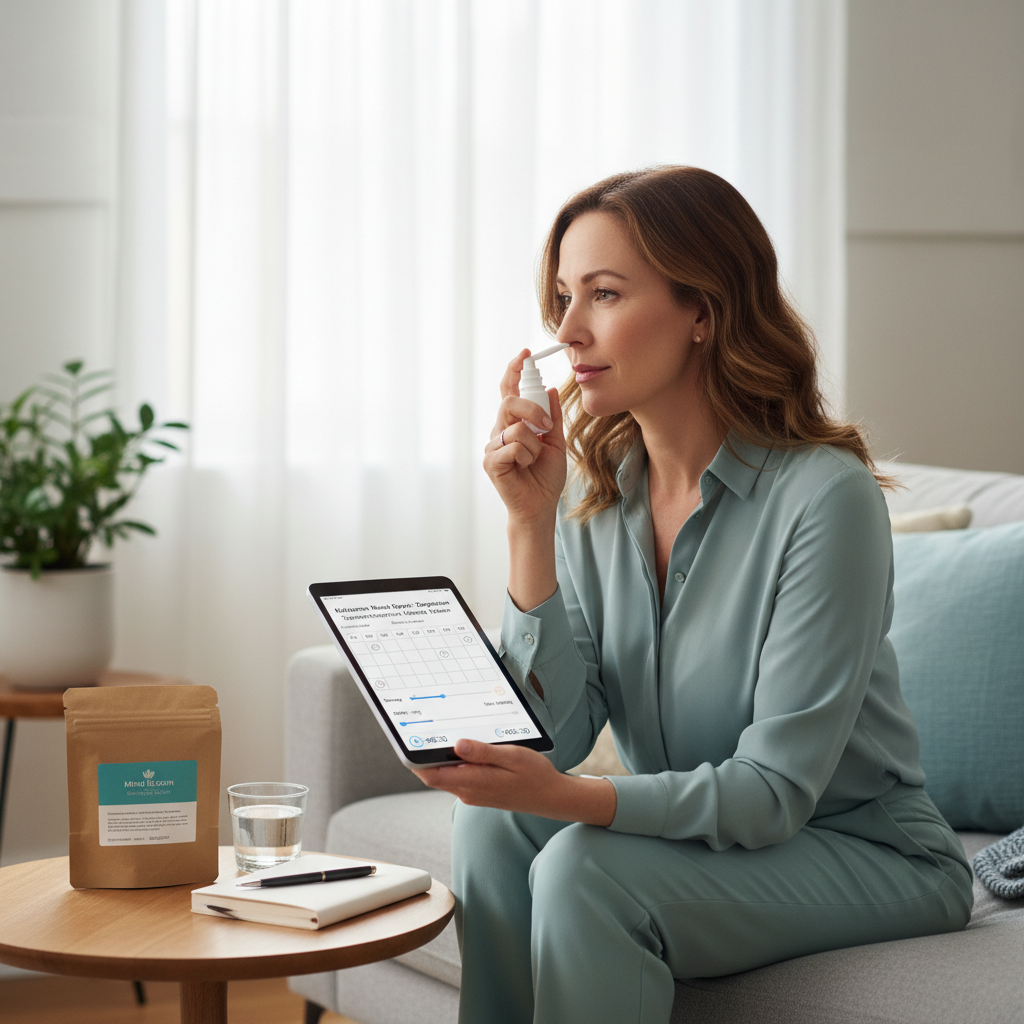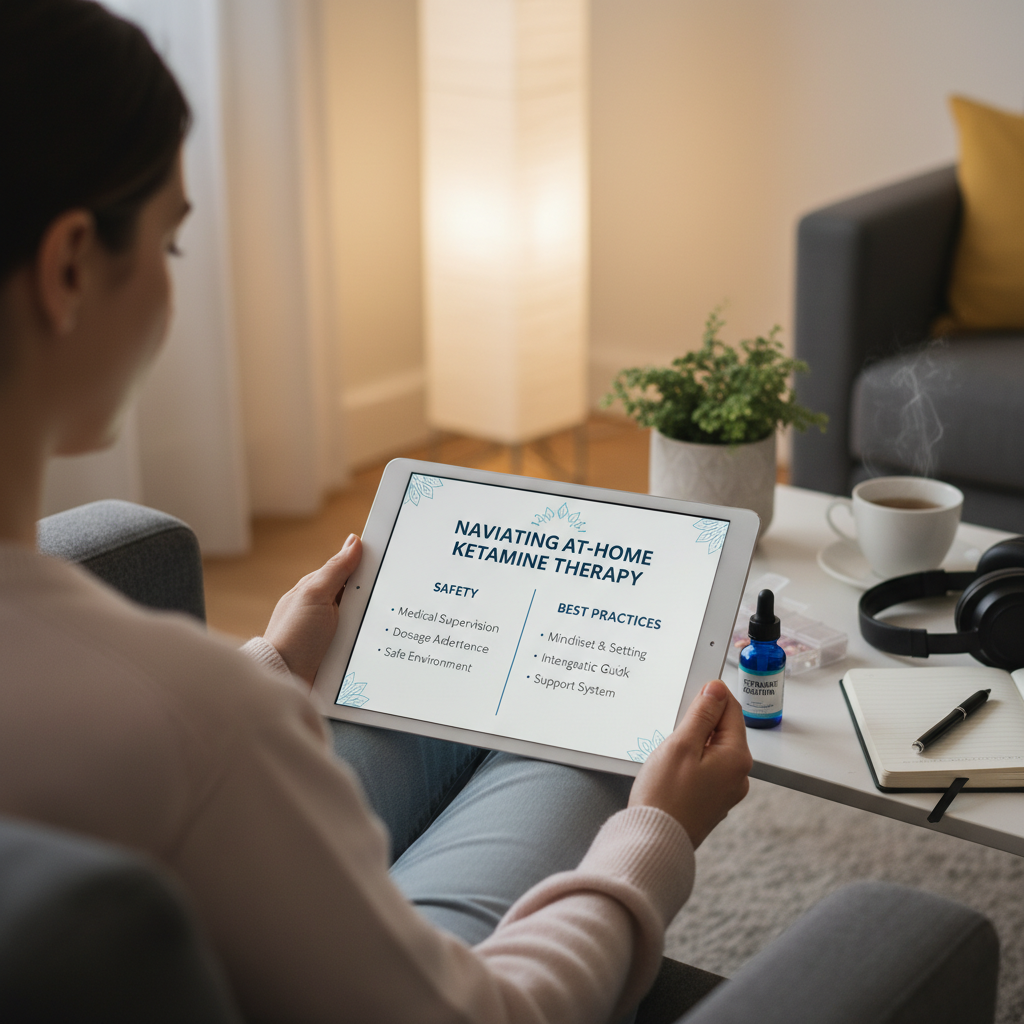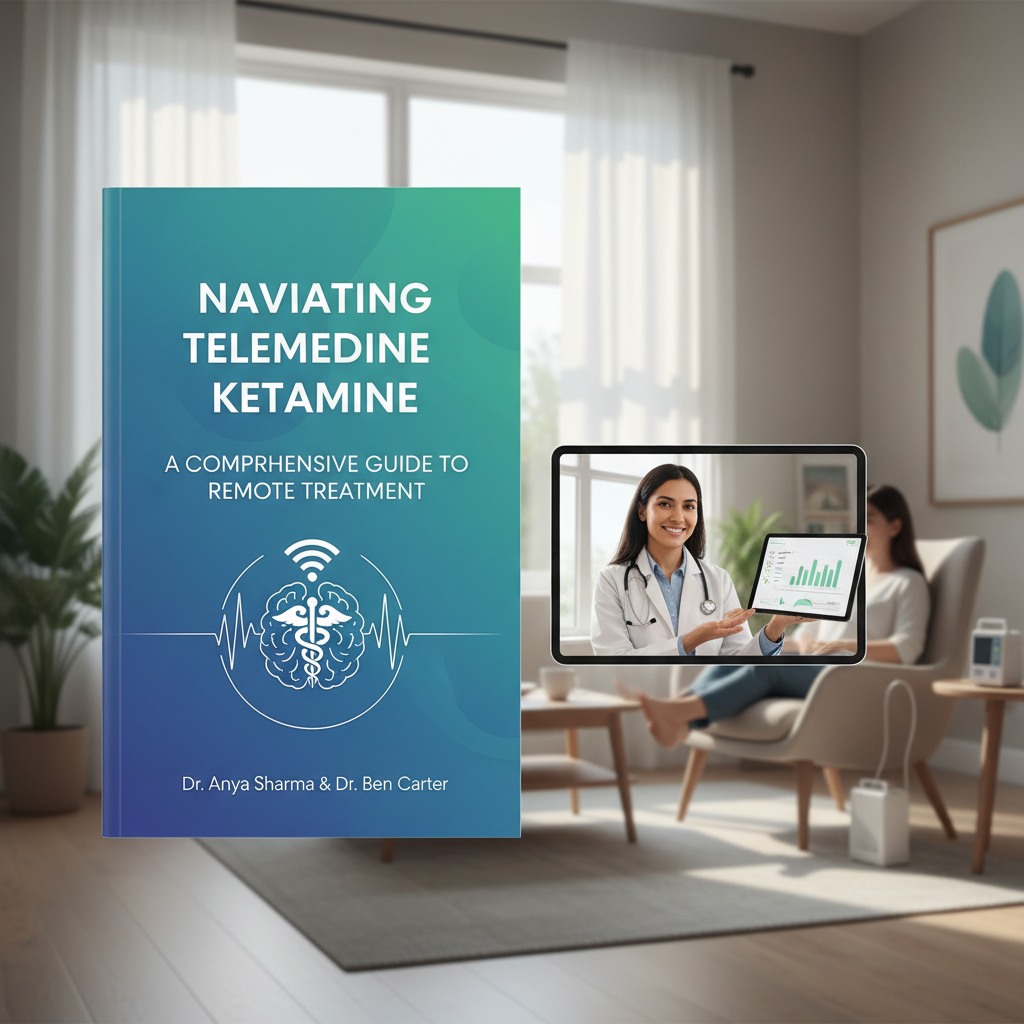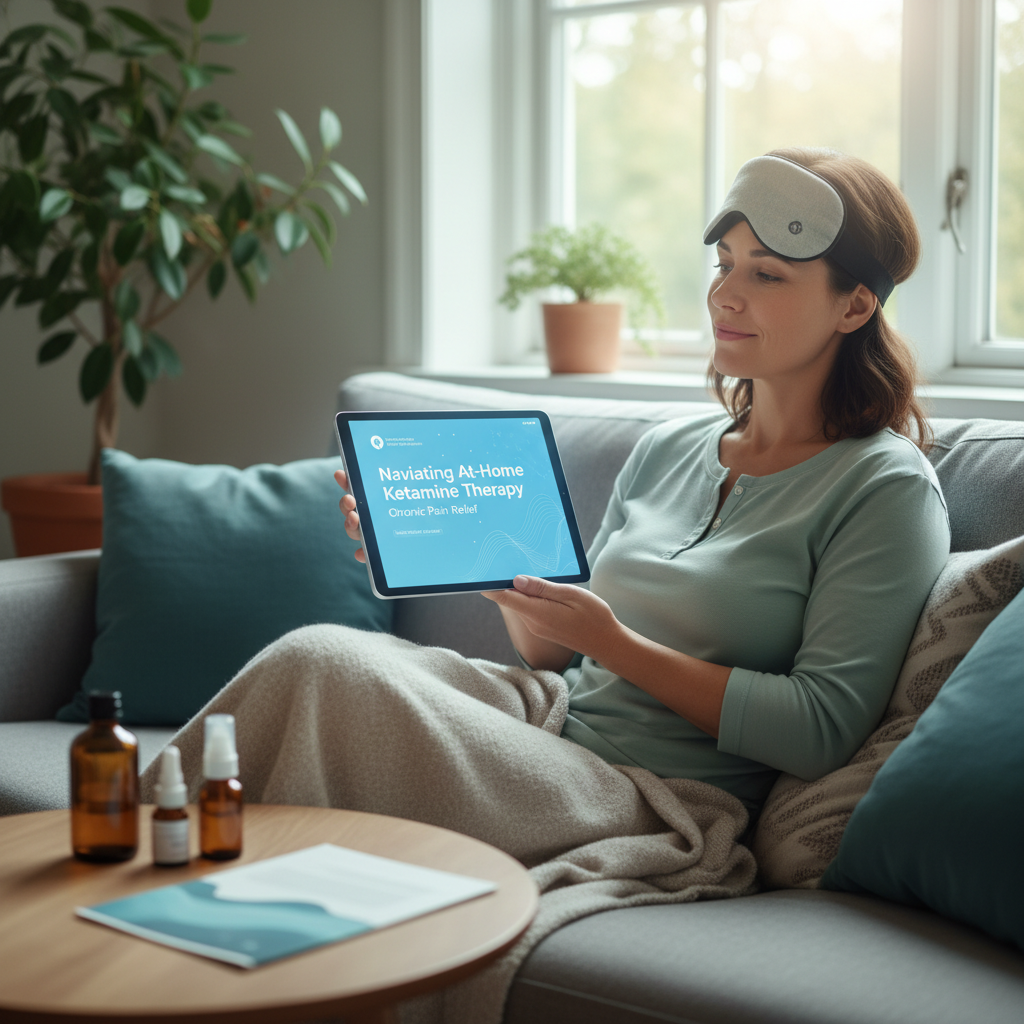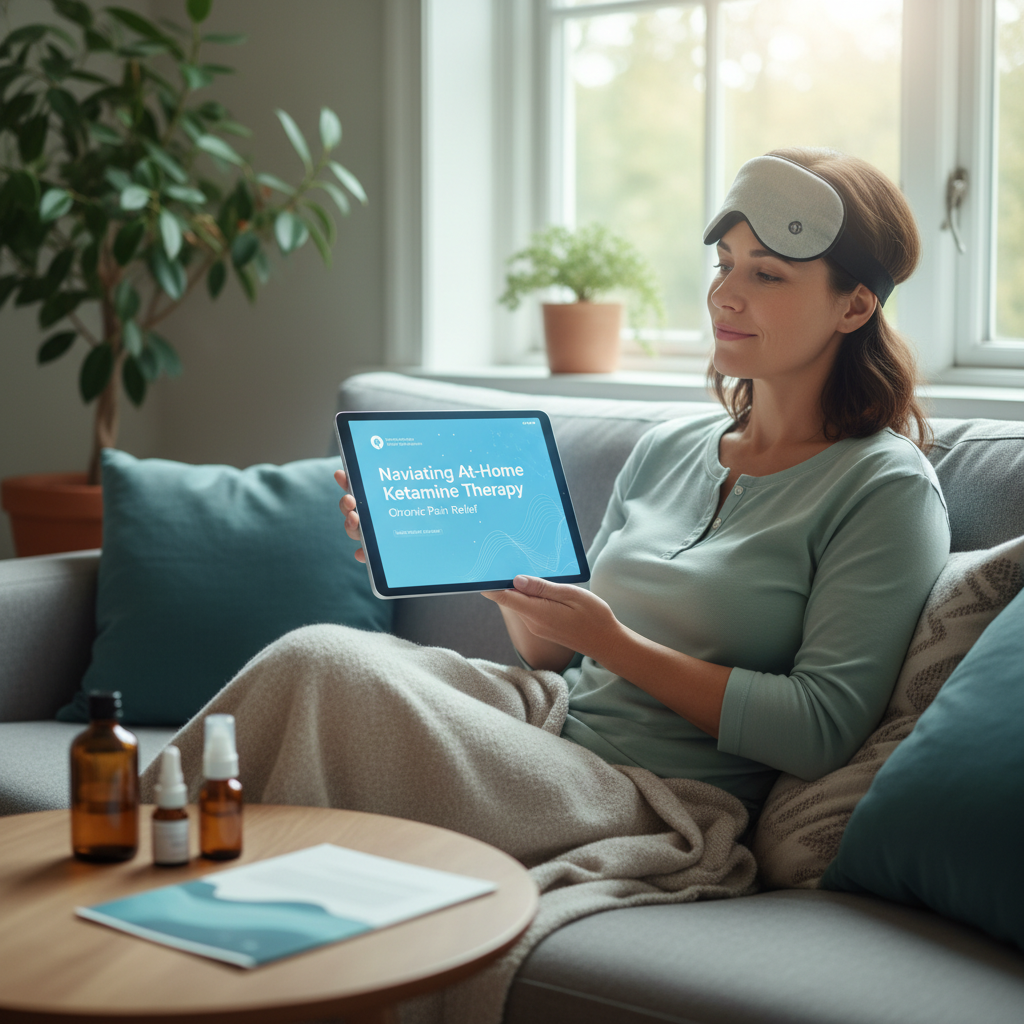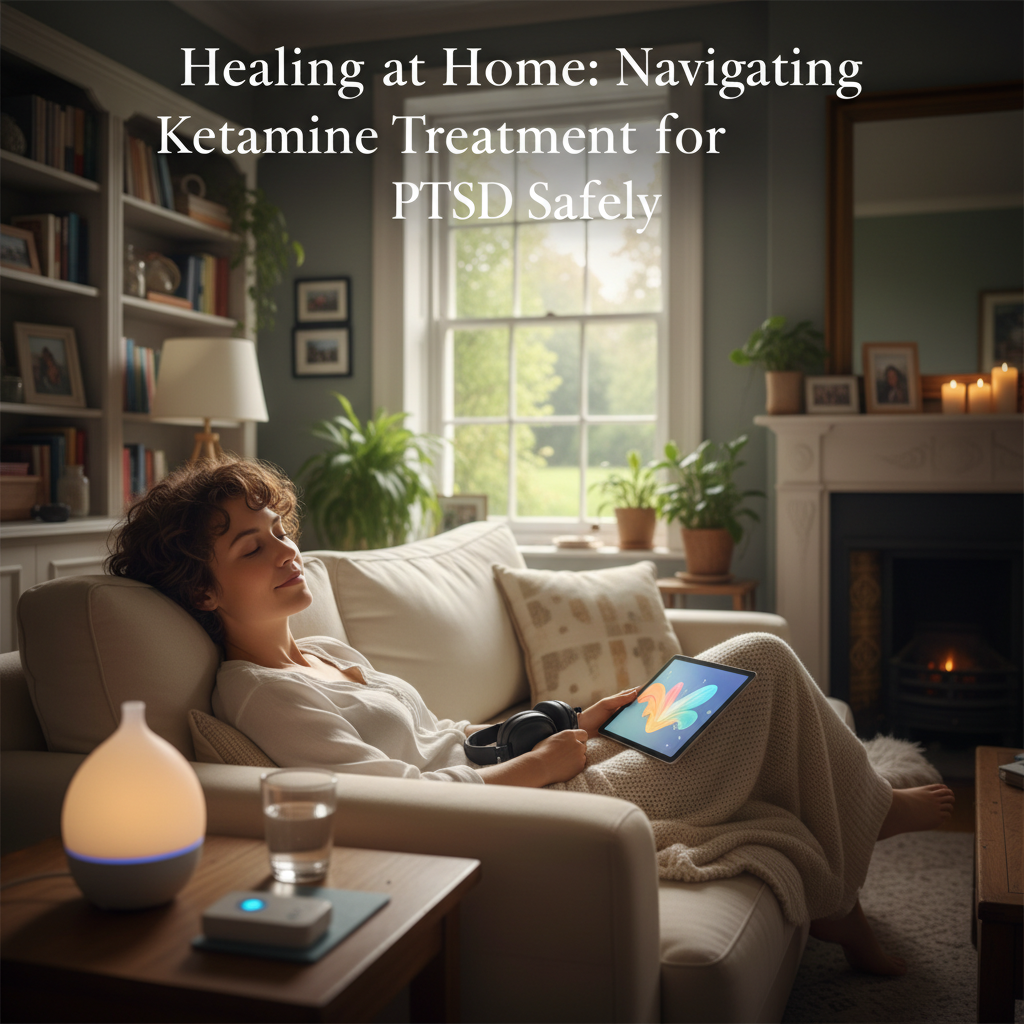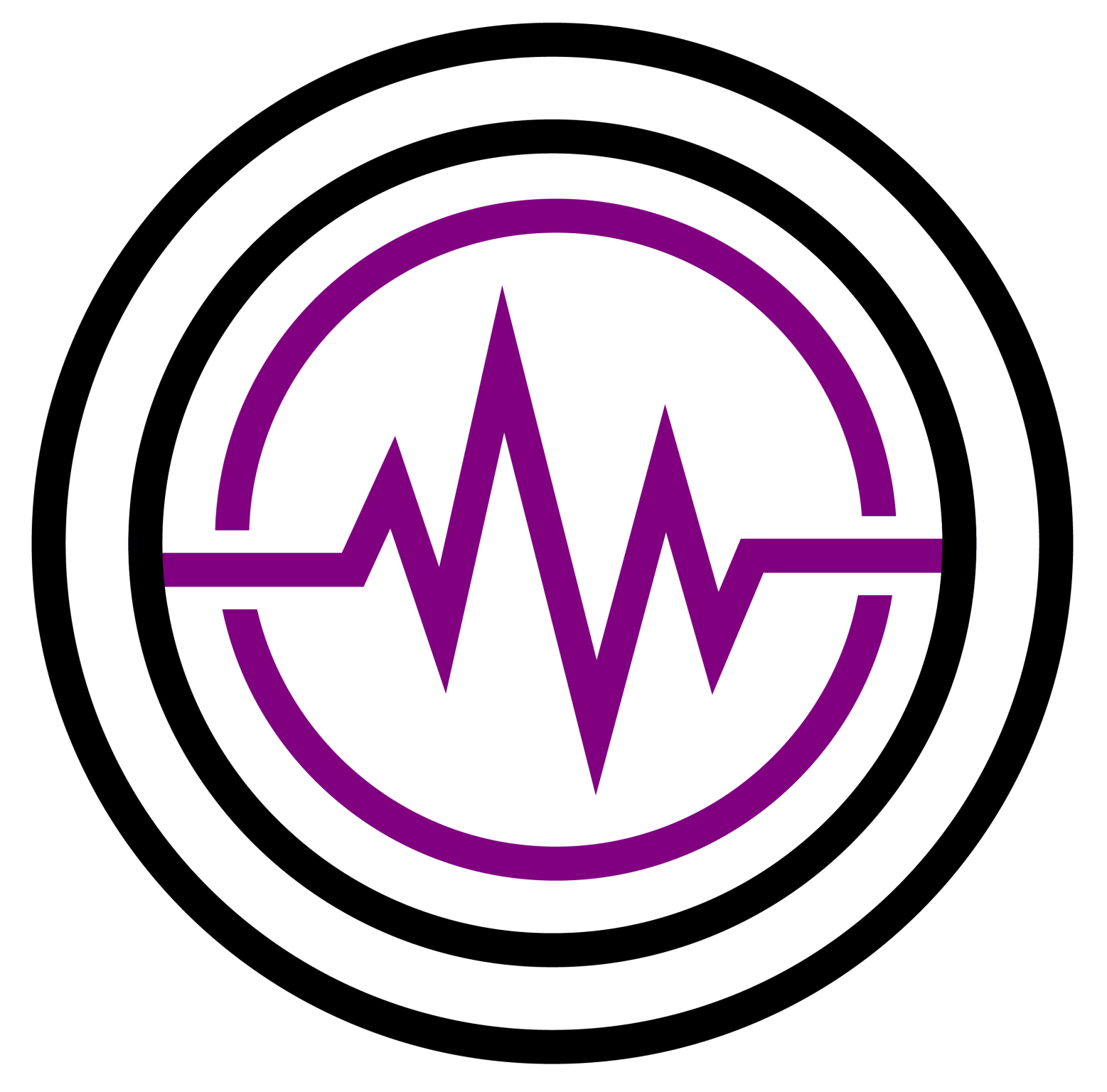Discovering modern mental health solutions from the comfort of your home.
Quick Summary / Key Takeaways
- At-home ketamine treatment for depression offers a convenient and private alternative for suitable candidates, supervised remotely by medical professionals.
- Efficacy rates for ketamine in treating resistant depression are promising, with many patients experiencing rapid symptom reduction, often within hours or days.
- Safety is paramount; home treatment requires strict adherence to protocols, including vital sign monitoring, a supportive environment, and professional oversight.
- Understanding the differences between at-home, clinic-based, and different administration methods (sublingual, nasal, IV) is crucial for informed decision-making.
- Integration of therapy and lifestyle changes alongside ketamine treatment significantly enhances long-term outcomes and personal growth.
Introduction
In the ongoing battle against depression, particularly for those who haven’t found relief with traditional treatments, ketamine has emerged as a beacon of hope. What was once exclusively administered in clinical settings is now, for many, safely making its way into the sanctuary of home. But the thought of ‘ketamine depression treatment home’ can conjure a mix of curiosity and apprehension. Is it truly safe? Is it effective? How does one even begin to navigate such a cutting-edge approach from their living room? The landscape of mental healthcare is evolving, embracing technology and personalized care to bring powerful treatments directly to you. This article isn’t about selling a service; it’s about educating, empowering, and guiding you through the intricate world of at-home ketamine therapy. We’ll explore its potential, demystify the process, and provide the insights you need to make an informed decision about this revolutionary path to well-being. Imagine finding profound relief without leaving the space where you feel most secure.
At-Home vs. Clinic-Based Ketamine Treatment
| Feature | At-Home Treatment | Clinic Treatment | Key Benefit |
|---|---|---|---|
| Environment | Familiar, private, comfort of home | Clinical setting, specialized room | Personal comfort |
| Cost (Avg.) | $300-$700 per session/kit | $400-$1000+ per session | Potentially lower cost |
| Supervision | Remote via telehealth, local contact | On-site medical staff, in-person | Enhanced privacy |
| Administration | Sublingual lozenges, nasal spray | IV infusion, intramuscular injection | Greater flexibility |
Efficacy & Safety Profile: At-Home Ketamine
| Aspect | Details | Metric/Observation | Consideration |
|---|---|---|---|
| Response Rate | Significant symptom reduction | Up to 70% for TRD patients | Individual variability |
| Onset of Action | Faster than traditional antidepressants | Hours to days vs. weeks | Acute relief potential |
| Side Effects | Transient, manageable | Nausea, dissociation, blood pressure changes | Requires careful monitoring |
| Safety Protocol | Crucial for remote care | Caregiver present, vital sign checks | Ensures patient well-being |
Application Preparation Checklist
- Ensure a quiet, safe, and comfortable treatment space at home.
- Identify a trusted, sober caregiver to be present throughout the session.
- Review all medical instructions and emergency protocols with your provider.
- Prepare your mind with intention; clear schedule, light meal beforehand.
Post-Arrival Checklist
- Process your experience: journal, meditate, or discuss with your therapist.
- Stay hydrated and rest adequately after your treatment session.
- Reflect on insights gained and how to integrate them into daily life.
- Schedule follow-up discussions with your provider for ongoing support.
Table of Contents
Section 1: Understanding At-Home Ketamine Treatment
- What is at-home ketamine treatment for depression?
- Who is a suitable candidate for home-based ketamine therapy?
- How does at-home ketamine differ from clinic-based treatments?
- What are the primary benefits of receiving ketamine treatment at home?
- What are the potential risks or downsides of home ketamine treatment?
Section 2: The Science and Efficacy
- How does ketamine work in the brain to alleviate depression symptoms?
- What is the typical success rate of ketamine for treatment-resistant depression?
- How quickly can one expect to see results from at-home ketamine therapy?
- Is at-home ketamine therapy covered by insurance, and what are the costs?
Section 3: The At-Home Treatment Process
- What does a typical at-home ketamine treatment session involve?
- What kind of supervision and support is provided during home treatment?
- How do I prepare my home environment for a ketamine session?
- What safety precautions are essential for at-home ketamine administration?
Section 4: Beyond the Session: Integration and Support
- How important is psychotherapy or integration work alongside ketamine?
- What are the long-term outlooks for individuals using at-home ketamine?
Frequently Asked Questions
Section 1: Understanding At-Home Ketamine Treatment
FAQ 1: What is at-home ketamine treatment for depression?
At-home ketamine treatment involves medically supervised administration of ketamine, typically sublingual lozenges or nasal spray, in a patient’s own home for managing depression. This approach prioritizes patient comfort and privacy, delivering care via telehealth platforms. A licensed medical provider guides the patient through the process remotely. This ensures that safety protocols are maintained while allowing individuals to heal in their most familiar surroundings. It represents a significant shift towards accessible mental health solutions.
FAQ 2: Who is a suitable candidate for home-based ketamine therapy?
Suitable candidates for home-based ketamine therapy are typically adults with moderate to severe depression, especially those with treatment-resistant depression (TRD), who have been thoroughly screened by a medical professional. They must also have a stable home environment and a trusted, sober adult caregiver present during sessions. Contraindications include uncontrolled high blood pressure, certain heart conditions, or a history of psychosis. A comprehensive medical and psychological evaluation is always the first step to ensure safety and appropriateness.
FAQ 3: How does at-home ketamine differ from clinic-based treatments?
At-home ketamine typically uses sublingual lozenges or nasal sprays under remote supervision, contrasting with clinic-based treatments that often involve intravenous (IV) infusions or intramuscular (IM) injections with in-person medical staff. The primary distinction lies in the setting and mode of administration, offering different levels of comfort and direct medical oversight. Home treatment offers convenience and privacy, while clinic settings provide immediate access to emergency medical teams. Both aim for therapeutic effects but cater to different patient needs and preferences. Ultimately, the choice depends on individual medical history and comfort levels.
FAQ 4: What are the primary benefits of receiving ketamine treatment at home?
Receiving ketamine treatment at home offers significant benefits including enhanced privacy, reduced travel time and associated stress, and the comfort of being in a familiar environment during a potentially profound experience. This setting can lead to a more relaxed and open mindset, which may positively influence the therapeutic outcome. Additionally, it often makes treatment more accessible for individuals with mobility issues or those living in remote areas. The ability to integrate the experience directly into one’s personal space can also facilitate deeper reflection and integration.
FAQ 5: What are the potential risks or downsides of home ketamine treatment?
Potential risks of home ketamine treatment include the possibility of unsupervised adverse reactions, such as significant blood pressure changes or profound dissociation, if safety protocols are not strictly followed. There’s also a lack of immediate, in-person medical intervention compared to a clinic. Misuse or diversion of medication is another concern if not carefully monitored. Patient selection and adherence to medical guidance are crucial to mitigate these risks. While convenient, the home setting demands a high level of responsibility from both the patient and their designated caregiver.
Section 2: The Science and Efficacy
FAQ 6: How does ketamine work in the brain to alleviate depression symptoms?
Ketamine primarily works by rapidly increasing glutamate activity in the brain, leading to the formation of new synaptic connections, particularly in areas related to mood and cognition. Unlike traditional antidepressants that target monoamines, ketamine interacts with NMDA receptors, quickly restoring neural pathways often damaged by chronic stress and depression. This process, known as synaptogenesis, helps ‘rewire’ the brain, improving communication between different regions. This neuroplastic effect is believed to be responsible for its rapid and often profound antidepressant effects.
FAQ 7: What is the typical success rate of ketamine for treatment-resistant depression?
Ketamine has demonstrated impressive success rates, with studies indicating that up to 70% of individuals with treatment-resistant depression (TRD) experience significant symptom reduction. Many patients report a rapid onset of relief, often within hours or days, which is a stark contrast to traditional antidepressants that can take weeks. While not a permanent cure, ketamine often provides a window of relief, allowing individuals to engage more effectively in other therapeutic modalities. Individual responses vary, but the evidence points to it being a powerful option for those who haven’t responded to other treatments.
FAQ 8: How quickly can one expect to see results from at-home ketamine therapy?
Many individuals undergoing at-home ketamine therapy report experiencing an improvement in mood and a reduction in depressive symptoms within hours to days after their first session. This rapid antidepressant effect is one of ketamine’s most remarkable features, setting it apart from conventional treatments. While immediate relief is common, the full therapeutic benefits often unfold over several sessions as new neural pathways are established. Consistent treatment and integration work contribute to sustained improvement. It’s not uncommon for patients to describe a ‘reset’ feeling after their initial dose.
FAQ 9: Is at-home ketamine therapy covered by insurance, and what are the costs?
Insurance coverage for at-home ketamine therapy is currently inconsistent and varies widely by provider, policy, and state, with many plans not yet fully covering the treatment itself. While the medication might be covered, the provider’s consultation fees and remote supervision often are not. Patients typically pay out-of-pocket for treatment programs, which can range from $300 to $700 per session or monthly package, depending on the provider and services included. It’s crucial to contact your insurance company directly to understand your specific benefits. Some providers offer financing options.
Section 3: The At-Home Treatment Process
FAQ 10: What does a typical at-home ketamine treatment session involve?
A typical at-home ketamine treatment session begins with a pre-session check-in with your provider via telehealth, ensuring you are prepared and have your designated caregiver present. You’ll then self-administer the prescribed ketamine (usually sublingual lozenges or nasal spray) according to instructions. The active ‘treatment window’ generally lasts 45-90 minutes, during which you’ll relax in a quiet, comfortable space, often with an eye mask and calming music. The caregiver monitors you and vital signs, and your provider remains available. A post-session check-in concludes the process. This structured approach ensures both safety and therapeutic potential.
FAQ 11: What kind of supervision and support is provided during home treatment?
During at-home ketamine treatment, supervision is typically provided remotely by a licensed medical professional via a secure telehealth platform. This includes pre-session screenings, real-time availability during the session for questions or concerns, and post-session follow-ups. Additionally, a designated, sober adult caregiver must be present in person to monitor the patient’s well-being, vital signs, and assist if needed. This dual layer of supervision ensures both clinical oversight and immediate physical support, prioritizing patient safety throughout the experience. It’s a collaborative effort between patient, caregiver, and clinician.
FAQ 12: How do I prepare my home environment for a ketamine session?
Preparing your home environment for a ketamine session involves creating a quiet, comfortable, and safe space free from distractions. Choose a private room where you won’t be interrupted, ensuring it’s dimly lit and at a comfortable temperature. Gather comfort items like blankets, an eye mask, and a curated playlist of calming music. Remove any sharp objects or potential hazards. Ensure your designated caregiver understands their role and has a working phone. This intentional preparation helps minimize anxiety and enhances the therapeutic potential of the session. Think of it as creating a ‘sacred space’ for healing.
FAQ 13: What safety precautions are essential for at-home ketamine administration?
Essential safety precautions for at-home ketamine administration include ensuring a sober, trusted adult caregiver is present for the entire session. Patients must strictly adhere to prescribed dosages and administration instructions, and abstain from food and drink for several hours prior. Baseline vital signs should be checked, and the caregiver should monitor them throughout the session, having emergency contact information readily available. A working phone and emergency plan are crucial. Patients should avoid driving or operating machinery for at least 24 hours post-session. These measures are vital for preventing adverse events.
Section 4: Beyond the Session: Integration and Support
FAQ 14: How important is psychotherapy or integration work alongside ketamine?
Psychotherapy or integration work alongside ketamine treatment is critically important for maximizing and sustaining the long-term benefits of the therapy. Ketamine can create a window of neuroplasticity and emotional openness, making the brain more receptive to new insights and behavioral changes. Integration therapy helps process the experiences gained during ketamine sessions, connect them to personal struggles, and translate insights into actionable steps for daily life. Without this structured processing, the profound experiences may fade, limiting sustained improvements. It’s like planting a garden; the ketamine opens the soil, but integration helps the seeds grow.
FAQ 15: What are the long-term outlooks for individuals using at-home ketamine?
The long-term outlook for individuals using at-home ketamine for depression, particularly when combined with ongoing therapeutic support, is generally positive, showing potential for sustained remission and improved quality of life. While individual results vary, many patients report a significant reduction in depressive symptoms and a greater capacity to engage with life. Ongoing ‘booster’ sessions may be necessary to maintain these benefits, tailored to individual needs. The goal is not just symptom reduction, but also fostering neuroplasticity and developing coping mechanisms for lasting well-being. It offers a path to reclaiming agency in one’s mental health journey.

